Im wondering how can I achieve a successful query for a hierarchy structure i have with my users. I had posted a similar question but the structure changed where now only Executives can have costumers assigned to them.
There are this levels of user:
- Director
- Manager
- Executive
Example table USERS:
ID username privilege parent_ID
1 Director1 1 null
2 Director2 1 null
3 Manager1 2 1
4 Manager2 2 1
5 Manager3 2 2
6 Executive1 3 3
7 Executive2 3 3
8 Executive3 3 4
9 Executive4 3 4
10 Executive5 3 5
11 Executive6 3 5
And they will have their "costumers".
Example table COSTUMERS
ID name User_ID
1 c1 11
2 c2 10
3 c3 10
4 c4 9
5 c5 8
6 c6 7
7 c7 6
My problem is into what kind of join should i make so that every user will be able to see only the costumers that they are allowed to, which the rule would be that they can only see costumers from the executives below them, and executives will be able to see their own costumers only.
For example in the diagram above, if users was to check his costumers he should see:
Director1: C7,C6,C5,C4
Director2: C3,C2,C1
Manager1: C7,C6
Manager2: C5,C4
Manager3: C3,C2,C1
and the executives only would see their own costumers.
